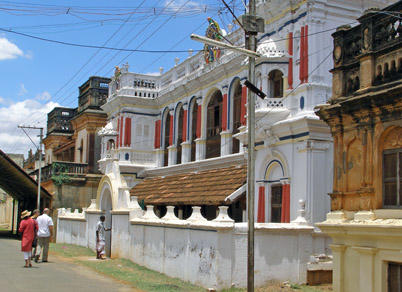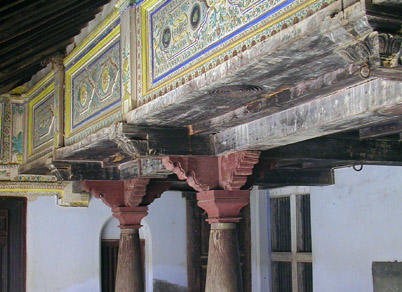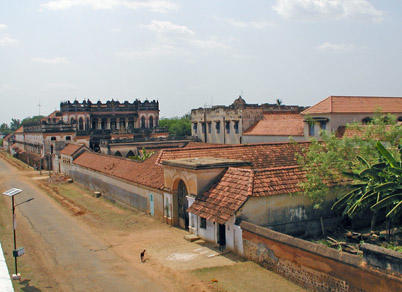Chettinad
2008 World Monuments Watch
Established by the Chettiars, a caste of traders who flourished in nineteenth-century India, Chettinad is famous for its opulent palaces and temples. Economic pressures forced the Chettiars to largely abandon the area as a business center in the 1940s. The residential buildings preserved from the Chettiar settlements incorporate both local and western architectural traditions in their plans and decoration. Courtyards and balconies provided airy spaces for entertaining and protection from the heat, and elaborate interiors and decorative façades impressed visitors and passersby alike. The Chettiar structures are still admired for their fine craftsmanship and materials used in their decoration. A substantial number of Chettinad's buildings have been razed since the 1940s, and many of those that remain are in a dilapidated state. Much of the destruction has been caused by commercial interest in antiques, with decorative elements from many structures being removed for sale or use in private homes. A few of the palaces have been restored as hotels and others are partially occupied by local families. The Indian government has expressed interest in further development of the area for tourism, but there is no overall plan in place to regulate the preservation or adaptive reuse of these unusual and important buildings. It is hoped that the international attention received from Watch listing will encourage India to extend protection to the civil architecture and urban heritage of this unique place.
Since the Watch
The nominators of Chettinad, ArcHe-S (Architectural Heritage Safeguard) have used Watch listing as a platform for advocacy to a much larger audience. In May 2007, through the “Network of Indian Cities of Living Heritage,” UNESCO organized a three-day international workshop in Karaikudi on the Heritage-Based Local Development of Chettinad. The workshop was organized in cooperation with ArcHe-S, the Chettinad Heritage Committee, and with the support of state government (Tamil Nadu). Representatives of national organizations, academics, and experts from France discussed ways to use Chettinad’s architectural heritage to increase employment and stimulate economic development. The momentum generated by this workshop led to a seminar hosted in January 2008 by Anna University (Chennai) in collaboration with the École de Chaillot (Paris). The two academic institutions have since organized student workshops for the documentation of traditional architecture in Chettinad. After these developments, in November 2008, UNESCO offered to help create a regional master plan for Chettinad. An early vision for the creation of a “Heritage House” came to fruition in June 2009. December 2010.



